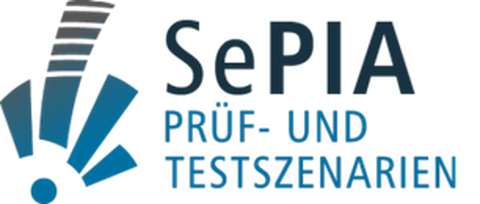Mar 22, 2021
Mastering driving scenarios - with safety!
EFRE-project "SePIA" successful in developing a scenario-based platform for inspecting automated driving functions
How can highly automated driving be safeguarded in the future? And which scenarios do drivers or highly and fully automated vehicles have to master so that tomorrow's road traffic poses fewer dangers?
These and other questions have been addressed by a consortium of Saxon project partners*, including two chairs of the TU Dresden, in the joint research and development project SePIA over the past three years**. It started with the fact that there are still no suitable and generally recognised test and inspection concepts for both the approval and a field investigation including the regular technical inspection of motor vehicles with highly automated driving functions. In this context, measures to ensure a correspondingly high level of performance must extend over the development period and, in particular, over the entire life cycle of automated vehicles.
Scenario-based platform maps human driving behaviour in a measurable way
Within the framework of SePIA, a complex manufacturer-neutral data platform was implemented with a large number of different traffic situations in road traffic and as a functional model. The data basis is formed by real driving and accident data, so that "normal driving scenarios" as well as critical scenarios and accidents can be represented. The scenario-based platform has laid the foundation for the measurable representation of human driving behaviour and its use as a reference point for highly automated driving. Based on this, requirements for automated driving functions can be derived, which are applied both in the registration and in the field inspection, including the main inspection of motor vehicles. With the publicly available prototype platform, SePIA has contributed to making highly automated driving safe in the future.
TU Dresden: Evaluation and representativeness of test / assurance scenarios
In the project, the Chair of Automobile Engineering at the "Friedrich List" Faculty of Transport and Traffic Sciences at the TU Dresden dealt with the evaluation and representativeness of test scenarios for the approval and continuous validation of automated driving functions. A developed evaluation metric makes it possible to evaluate normal driving and accident scenarios with regard to their criticality for a collective of human drivers. This allows automated driving functions to be tested and evaluated specifically with scenarios that are challenging for the human driver. Another focus of the chair was the fusion of different accident databases. This makes it possible to evaluate the test scenarios identified in the SePIA project in terms of their representativeness for macroscopic traffic events.
Prof. Günther Prokop, head of the Chair of Automobile Engineering, points out the importance of the topic of safety in automated driving: "We need to find uniform and reliable methods for safeguarding automated driving functions. The TU Dresden is also researching how relevant test scenarios can be generated from accidents, normal driving and traffic observation data, on which automated vehicles can 'get their licence'." In the coming years, the methods developed in SePIA will be further expanded and transferred into practice.
The Chair of Computer Graphics and Visualisation analysed natural driving data (NDS) in the project. For this purpose, objects such as cars were recognised from the driver's perspective in camera videos and their position and speed were determined. This made it possible to describe recorded situations, which were then evaluated by the Chair of Automobile Engineering with regard to criticality.
Bundling the core competences of Saxon industrial and research companies
The SePIA research project was funded by the European Union with money from the European Regional Development Fund as part of the Saxon state initiative "Synchronous Mobility 2023". One of the aims of this initiative is to bundle core competences of Saxon industrial and research companies and to establish innovative research results (e.g. on new vehicle concepts, assistance functions or IT networking). With SePIA, this goal was put into practice and at the same time Dresden was strengthened as a science location. The results will be presented to the professional public in a final event in summer 2021. As soon as a concrete date has been set, it will be announced via the project partners.
* Partner: Fahrzeugsystemdaten GmbH, TraceTronic GmbH, Verkehrsunfallforschung an der TU Dresden GmbH, Fraunhofer Institute for Transportation and Infrastructure Systems IVI, TU Dresden – Chair of Computer Graphics and Visualisation, TU Dresden – Chair of Automobile Engineering at the „Friedrich List“ Faculty of Transport an Traffic Sciences
** Duration: June 2017 to November 2020


